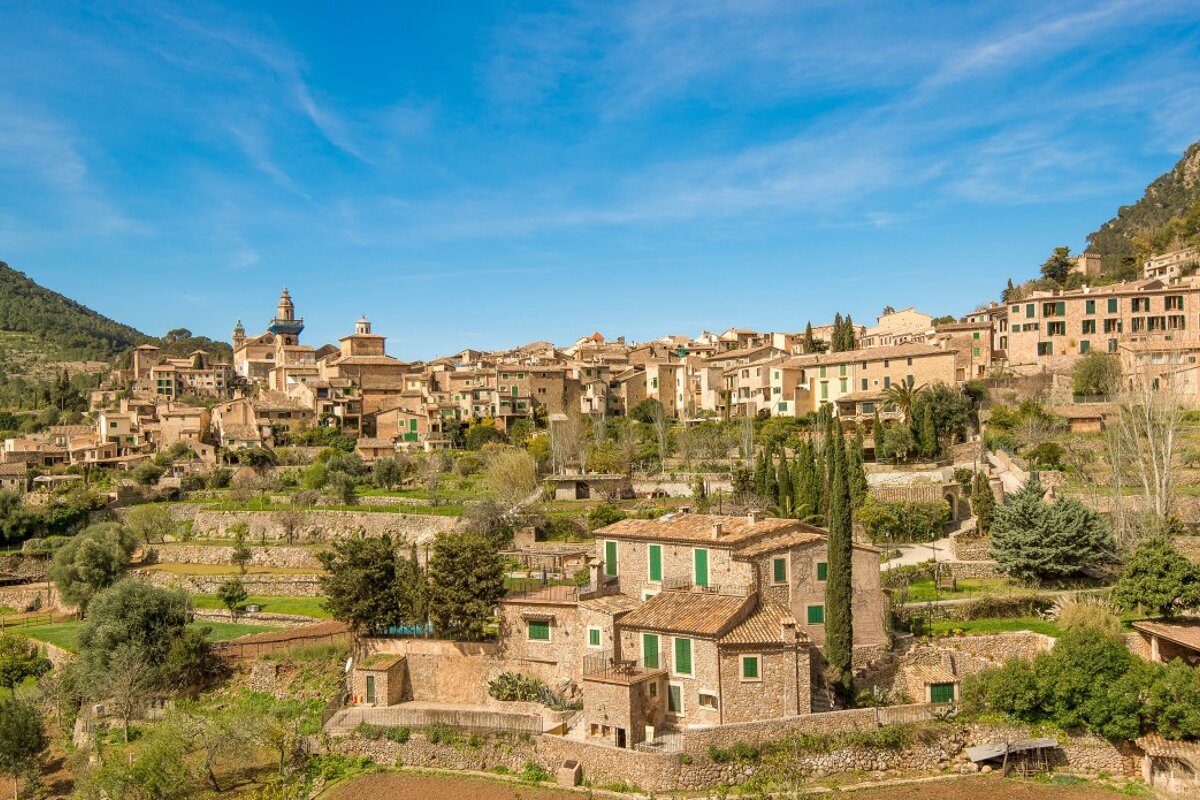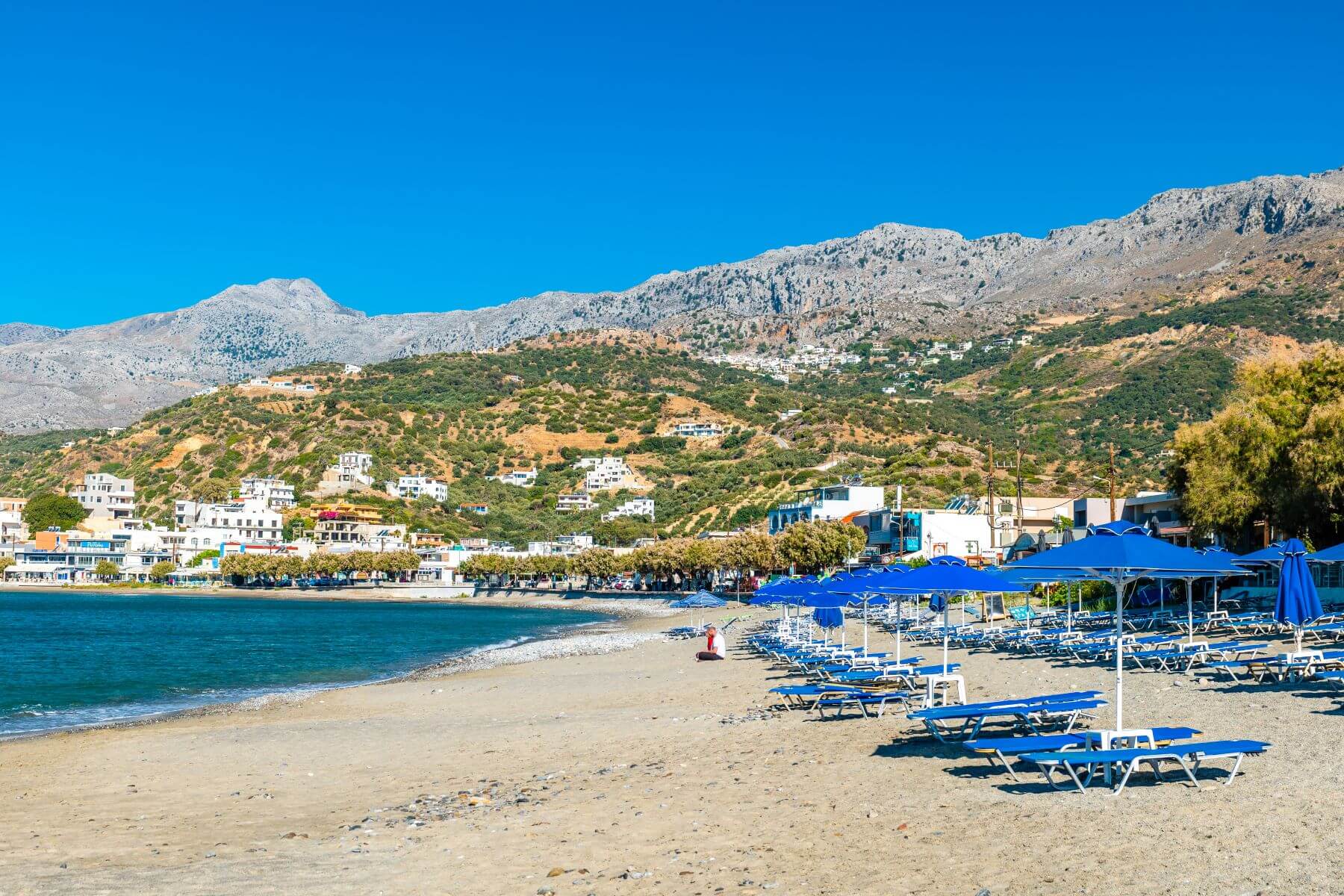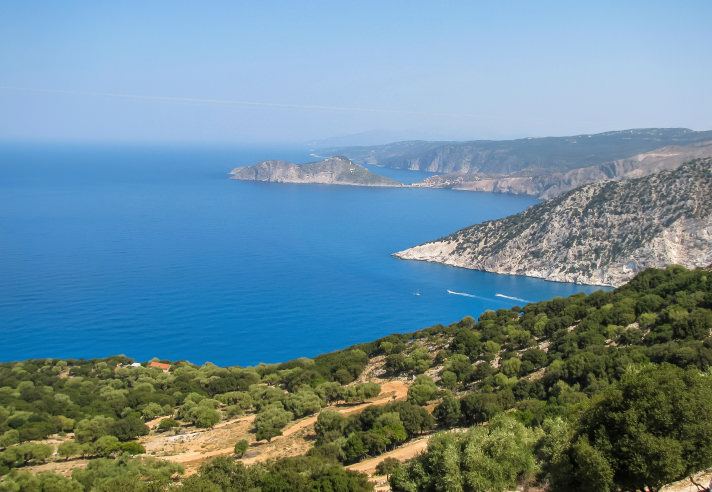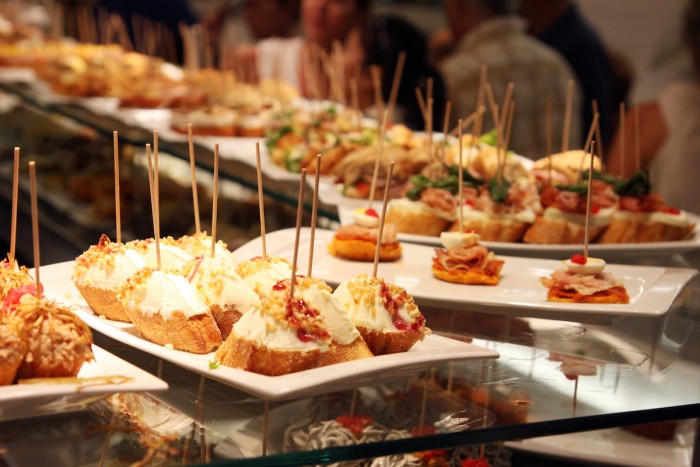I ate the tastiest curries ever. I took night dives in the warm ocean and bathed with elephants. I took long walks through historic temples, traveled by train through the tea fields and fell madly in love with the people. Sri Lanka, the wonder of Asia.
In the distance, in the middle of the Indian Ocean, Sri Lanka emerges. The emerald green island, off the south coast of India, is about the size of the Netherlands and Belgium combined. It is home to rainforests, rice and tea fields, jungles and beaches. Through my airplane window I see the rustling palm trees on the coast. I see the small cars swarming on the narrow roads of the capital Colombo. It looks chaotic.
And chaos, it turns out to be indeed. The first time on the road in Sri Lanka I was shocked. The roads of the capital Colombo are a mess. Scooters, cyclists, tuk-tuks, passenger cars, buses and trucks; everything runs together. The three of us side by side on the road, overtaking in the bend, tailgating and incessant honking. If you don’t go along with it, if you’re not quick and agile, you won’t get ahead. I can smell the diesel and the exhaust fumes. Every now and then a family passes by. All together on a moped, the baby first. Or a whole family is crammed into a tuk-tuk. Bus passengers get out in the middle of the road when the driver is waiting at the red traffic light. Luckily I don’t have to drive myself. I booked a guide who is used to the traffic. And strangely enough, you get used to it quickly: after a few hours I don’t look at anything anymore.
Bathe with the elephants of Pinnawela
I’m on my way to the Pinnawela elephant orphanage, one of the country’s top tourist attractions. The reserve is located in the middle of Sri Lanka and is home to about forty elephants. Every animal has its own story. One was disowned by family, the other was injured in the civil war. The journey to the orphanage is long. The roads of Sri Lanka are always busy and there is only one highway. So almost all rides go through indoors. The reserve I am going to is about 85 kilometers from the capital Colombo. It takes us about 2.5 hours to cover that small part.
The elephant orphanage turns out to be less impressive than I had hoped. I see elephants in cages and unfriendly caretakers. The park is uninviting and also very touristy. Yet the long drive to Pinnawela has not been in vain: the highlight is yet to come.
Every day the elephants are allowed to bathe in the Maha Oya river for a few hours. Around 2 o’clock in the afternoon the whole herd trudges across the street towards the water. The keepers keep the animals together screaming. Soon the Maha Oya is full of elephants. There are dozens of them. Big and small. They play with each other and take an extended dive. I sat down on the terrace of the Hotel Elephant Park. From there I can see everything happening. It’s amazing: I have lunch with a view of a herd of elephants playing.


The fortress in the sky
A long first day of travel is over. I drove on to Sigiriya. In this region is the historical rock fortress of Sri Lanka. My location this night is Hotel Sigiriya which is built in a beautiful place. When I take a dip in the pool, I have a view of the highlight of this place: Lion Rock. The Sri Lankans also call the rock ‘the fortress in the sky’. A climb to the top is scheduled for tomorrow morning. Now it’s time for a delicious dinner with local dishes. That night I eat the tastiest curries I’ve ever had. The hotel’s cook comes to the table to flambé his fresh shrimp in rum. There are bowls full of fresh fruits and vegetables. The local live band completes the evening.
Lion Rock for breakfast
It is six o’clock when the alarm goes off: Lion Rock is waiting. Early in the day the rock is at its most beautiful due to the warm golden glow of the morning sun. Moreover, there are hardly any other tourists in sight at this time, my guide assured me. And indeed, when I reach the bottom of the rock an hour later, I am almost completely alone.
The first stories about this place are about 1600 years old. The king of the time, King Kassapa, had his palace built on top of Lion Rock, about 200 meters away. To get there I have to climb the tens of steep steps of the rock. During my climb I pass frescoes from the time of the king. A small number have been preserved. Unfortunately, Kassapa’s most important legacy has been largely destroyed: the giant lion-shaped gate after which this place is named. The king had the beast cut out of the stones. Now only the two front legs are left.
Sigiriya has been designated a World Heritage Site by UNESCO. And when I reach the top after an hour of climbing, I understand why: from here I have a fantastic view over the entire complex. I see the palace gardens below, the terraces and the moats that the king had dug. Little remains of his palace at the top, but parts of the old walls and the royal throne still remain.
I enjoy the view for a while and then go back down. On the way I meet the first groups of tourists: how fortunate to have had this special place almost to myself.



Buddha’s tooth
For Buddhists, it is the holiest site in Sri Lanka: the Temple of Sacred Tooth. Here lies the tooth of Buddha. I traveled on to the city of Kandy in the middle of the country, 100 kilometers below Sigiriya.
Walking through the bustling streets of Kandy city, I can hardly imagine that behind the walls of the sacred temple lies another world. But when I go in, I end up in a completely different environment. Here it is quiet, serene. There is a spiritual atmosphere. Hundreds of Sri Lankans walk silently in groups across the courtyard. Many are dressed in white. They have come to pray and ask their spiritual leader for help. They bring incense and lotus flowers to honor Buddha. With their eyes closed, the people stand before the altar where the tooth is said to lie. The tooth itself is not visible. It is hidden in seven boxes. Each box is slightly smaller.
Walking through the temple it strikes me again how incredibly friendly Sri Lankans are. I have never met such lovely people. Nobody minds me taking pictures. Many people are curious, whispering they ask where I come from. Children pose patiently and their parents thank me afterwards. They smile broadly when I make contact with them. Even the clean-shaven monks in orange habits like to have their picture taken. No one is whining about money, no matter how bad some may have it. So many warm people together, I am impressed. So I take extensive time to view the temple and to hang out with the locals. I enjoy the peace, the silence. I stare and forget for a moment where I am.



Go by train to Little England
It’s time for the highlight of my trip. This is what I’ve been looking forward to so much: a train journey through the tea fields. I’m getting on the train in Kandy. The tourists are in first class, there is air conditioning and it is nice and quiet. It can be quite busy on the train at times and it is therefore not a bad idea to buy more expensive tickets. But if you want to experience the real Sri Lanka, sit in the second or third class. Most of the locals are there.
The train takes me to Nuwara Eliya, the ‘Little England’ of central Sri Lanka. It is one of the most beautiful places in the country. The city was founded by the British in the 19the century. And unfortunately the climate is also British. The closer I get to Nuwara Eliya, the colder it gets. The region is located high and is the coldest place on the island. It was still 31 degrees in Kandy, soon I will have to wear a sweater and I need an umbrella. During the day it is on average 20 degrees in the area, but at night it is about 10 degrees cooler. Sometimes it can even freeze in this part of the tropics.
I hang the entire train journey in the open doors of the train, next to the conductor. There is so much to see outside that I don’t want to miss. The train runs quietly through the green landscape. Because the driver does not make a lot of speed, I have plenty of time to take pictures and look around me. Groups of school children wave happily as the train passes. Every now and then a salesman climbs aboard with a basket full of fresh mangoes and papayas that he tries to sell to the passengers. We pass mountains, valleys, waterfalls. In the distance I see the rice fields. In the tea fields, groups of women in colored clothes are picking the tea leaves.
After a four-hour train journey I arrive in Nuwara Eliya. In the distance I have already seen the beautiful tea plantations and now it is time to visit one. There are miles of fields full of tea in the region. They are owned by thousands of different entrepreneurs. A tea tree has to be picked once every four days. It is the Sri Lankan women who do that. It’s drizzling. Still, work on the tea plantations continues. The pickers stand barefoot in the fields. On their backs hangs a net in which they put the tea. The leaves are beautifully green, thanks to the humid climate here. At the end of the day, the harvest goes to one of the 630 factories in the region. The tea can then be bought for next to nothing on the small markets of the city. For example, a can of loose leaf tea from the famous brand Dilmah costs less than 450 Sri Lankan rupees, about 2.50 euros. Before I know it my suitcase is full of nice souvenirs and all kinds of variations and flavors.






Piece of the Netherlands in Sri Lanka
From little England to little Netherlands. I leave the cold behind and drive through the hills to Galle, on the south coast of the island. This place is an indispensable destination for Dutch travelers in Sri Lanka, because in the 17th and 18th century this place was in the hands of the Dutch. So off to the Netherlands of Sri Lanka!
I’ve been in the car for six hours when I arrive at the south coast. A salty wind blows in my face. The smell of the sea, a sharp sun. There is little here that reminds us of the misery of 2004. A huge tsunami devastated much of the coastal region. Galle, where I am, was also in danger of becoming a victim. But the historic quarter of Galle was spared thanks to the Dutch fort that the VOC built here in 1663. I see the ramparts of the fortress on the edge of the ocean. The waves crash against it. They still hold back the wild water. Just like then, in 2004.
A walk through Galle is a walk through Dutch history. I see everything from the time of domination. The Dutch came here in 1640. They conquered the strategically interesting place from the Portuguese, but had to cede it to the British in 1796. Most of the buildings in the old quarter date from the Dutch period. Such as the reformed church, with a Dutch organ and tombstones. I am walking through the Lijnbaanstraat. And surnames we all know are still used: Zwart, Akesloot and Aeloes. I stroll through the streets for a few hours and get a breath of fresh air at the water. Galle is a wonderfully energetic place with nice terraces and nice shops. A small piece of the Netherlands in the middle of the Indian Ocean. It remains special.
Rest by the sea
My journey is almost over. I spend another day at the sea and before I fly back to the Netherlands I want to see one more thing: the fish market of Negombo. The seaside resort is located near Colombo airport on the west coast and is therefore an ideal final destination.
Negombo’s nickname is ‘Little Rome’, because of the many Christian churches that stand here. Nearly two-thirds of the population adheres to the Buddhist faith, but the rest are Christian or Muslim. In this coastal city, fishing is the main source of income. I’m lucky. The sea is too rough today and the fishermen have therefore all stayed ashore. They normally stay on the water all night and don’t return to land until very early in the morning. Today they are working on the quay. Fishermen sort their catch, scrub the boats, untangle fishing nets. The smell is unbearable. The fresh fish is in the open air, under the hot sun. Black ravens circle above the boats and make a deafening noise. Every now and then they run off with a fresh fish. Children run through the dirt. A boy slaughters a pig in a small shed by the water. The fishermen proudly display their catch. I am invited for a boat trip the next day, but unfortunately, my trip is almost over.
The rest of the day I rest on the beach of Negombo. At the Jetwing Beach hotel I lie on the beach, drink cocktails and do nothing for the rest of the day. My favorite way to end an intensive trip. I have traveled long days, seen the most beautiful things, talked to the sweetest people. It’s time to go home and leave this dream island behind. A suitcase full of souvenirs and a head full of wonderful memories.
















